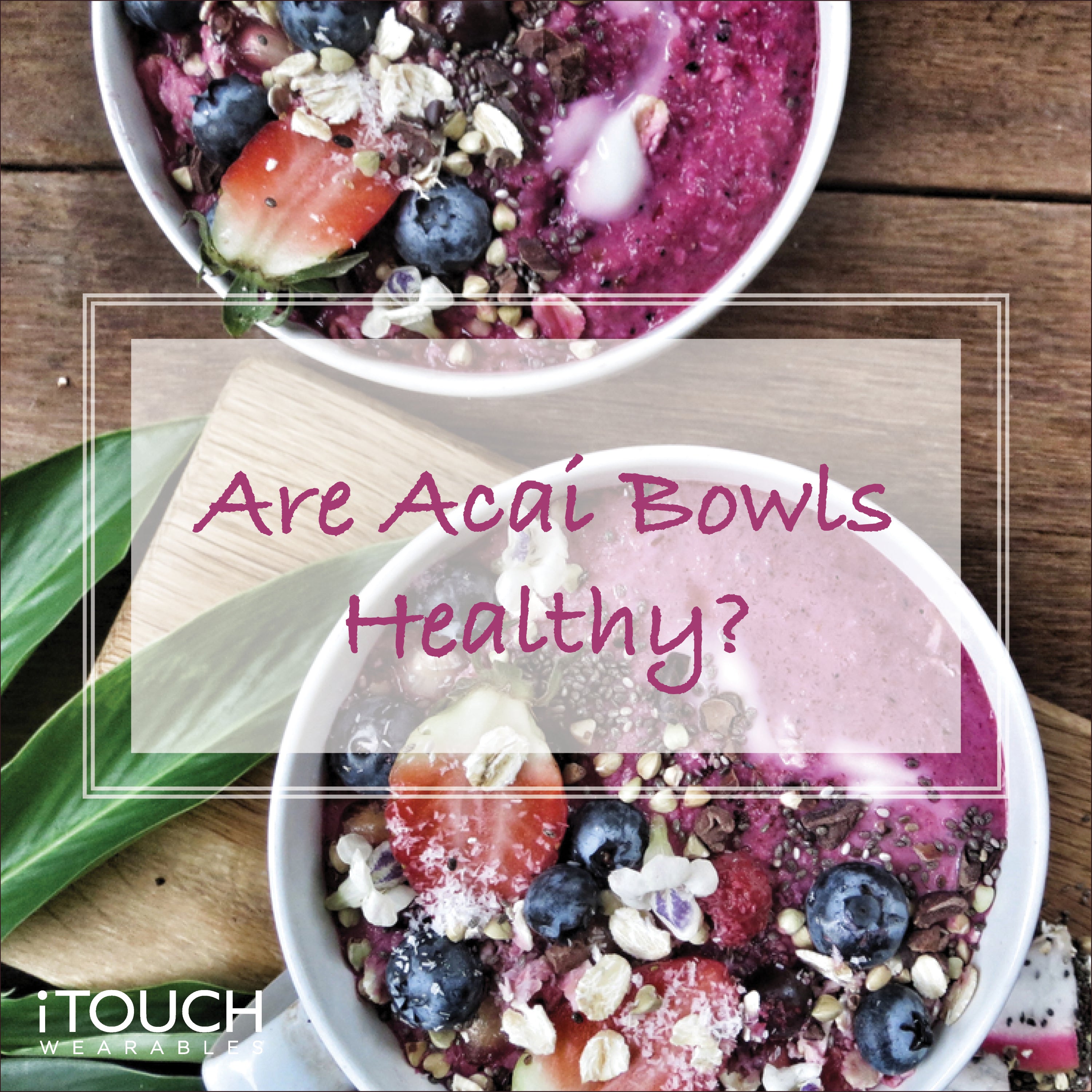
Are Acai Bowls Healthy?
Acai bowls have been one of the latest "health food" crazes that having been sweeping the nation. Numerous acai bowl places and brands such as Playa Bowls, Juice Nation, and Pure Green have been popping up, serving as a deceivingly healthier version of a smoothie bowl (though, let's be honest, are there actually any differences between the two?). The Instagram-able, colorful, and vibrant nature of the healthy superfood certainly have won the charm of many alike, and their creamy texture and versatility being proven to be a fan of many. Though being hailed as a superfood, that is full of antioxidant-rich nutrients, the acai bowl may not be what it is all cracked up to be. This article will go in-depth as a mini-guide in exploring just whether or not acai bowls are actually healthy:
What Is An Acai Bowl?

For acai bowls to be prepared, one often purees the berries into a smoothie-like bowl. The acai berry itself, is usually grown within Central and South America, being harvested for cultivating practices or other manufacturing practices as well. The berry itself is packed with inflammation-fighting antioxidants and is reportedly found to be super low in sugar when compared to other fruits - 2 to 3 grams of sugar per serving to be exact!
Commercial acai bowls that are often sold in many stores are made from the berry, but often sweetened with artificial sugars or syrups, drizzled with more honey or syrups, and then blended with sweetened coconut, soy, or other dairy-free milks. In addition, it is very common for these places as well to top the bowls with added features such as other fruits, like bananas, strawberries, or melons, and even coconut, chocolate, and nuts or nut butters - all adding additional sweeteners, calories, or fats.
In some scenarios, many commercial stores that sell acai bowls use substitutes instead of the real berries, known as either "pomegranate powders" or "acai powders," which both are packed with large amounts of sugar that are only going to drastically spike up an acai bowl's sugar content. You can now start to see how a sneakily sold "superfood" can actually being deceivingly unhealthy and turn quickly into a major sugar-bomb!
What Is The Nutritional Value of Acai Bowls?

When it comes to the nutritional value of an acai bowl or acai bowl nutrition in general, it truly depends on what one puts into it. In its most basic of form, this is the nutritional value of a 6-ounce (170-gram) acai bowl may contain the following nutrients:
- Calories: 211
- Fat: 6 grams
- Protein: 3 grams
- Carbs: 35 grams
- Sugar: 19 grams
- Fiber: 7 grams
One can see that the calorie in an acai bowl and acai bowl sugar content is quite high. Even more so, when it comes to the nutritional value of commercial acai bowls may be even worse, as they often come in much larger portions and can contain up to 600 calories or more and even 75 grams of sugar in a single serving - depending on which toppings you select.
In addition to just the acai berry itself, many acai bowls actually are blended with other fruits, such as bananas or strawberries. While these fruits make an excellent source of Vitamin C and manganese, they also contain numerous antioxidants as well that pair with the health benefits of the acai berry to protect your cells from oxidative damage - often caused by harmful compounds known as free radicals. They are also very high in potassium and can help in regulating blood sugar levels and protect against conditions like age-related bone loss or kidney stones.
As said, however, many commercial bowls are often packed with added sugars and added calories caused by added sweeteners or toppings. Many commercial bowls can include added nuts, seeds, fruits, and granolas, which on their own, can be quite heathy. However, it is easy to go overboard which many commercial acai bowls do, which make quite plausible to turn this healthy meal into one that is packed with sugar and added calories. In eating too much sugar over a large period of time, not only can you gain weight, but you are also promoting the development of liver diseases, heart problems and diseases, and type-2 diabetes.
The most recent Dietary Guidelines for Americans recommend limiting your daily added sugar intake to no more than 12 teaspoons for those following a 2,000-calorie diet, which is equal to about 48 grams of sugar. When purchasing a 6 ounce acai bowl, such as the one suggested above, you are eating around 11 grams of added sugar, which contributes to 23% of your daily intake. With commercial acai bowls, you may find yourself actually receiving anywhere from two to three servings, almost reaching more than half of your daily intake.
Recipes For Healthy Acai Bowls

Basic Acai Bowl
Serves 2-3 | From Messy Apron
Gather Together :
- 1 Packet (100 grams) of Frozen Acai Berry
- 1/2 Cup of 100% Apple Juice - From Concentrate
- 1 Small Banana - Frozen
- 1/2 Cup of Strawberries - Frozen
- 1/2 Cup of Blueberries - Frozen
Directions :
- Add to a blender and blend until smooth and creamy.
Nutritional Content
- Calories - 284
When it comes to acai bowls, choose one you make yourself or one that is blended with healthier options like other fruits or even vegetables. Avoid ones with added sweeteners and be cautious about the toppings you put on them. Share with us if you were shocked by these acai bowl facts by tagging us on Instagram @itouchwearables and Facebook @itouchwearables. Also, be sure to check out our new articles published daily!
-Patrick


